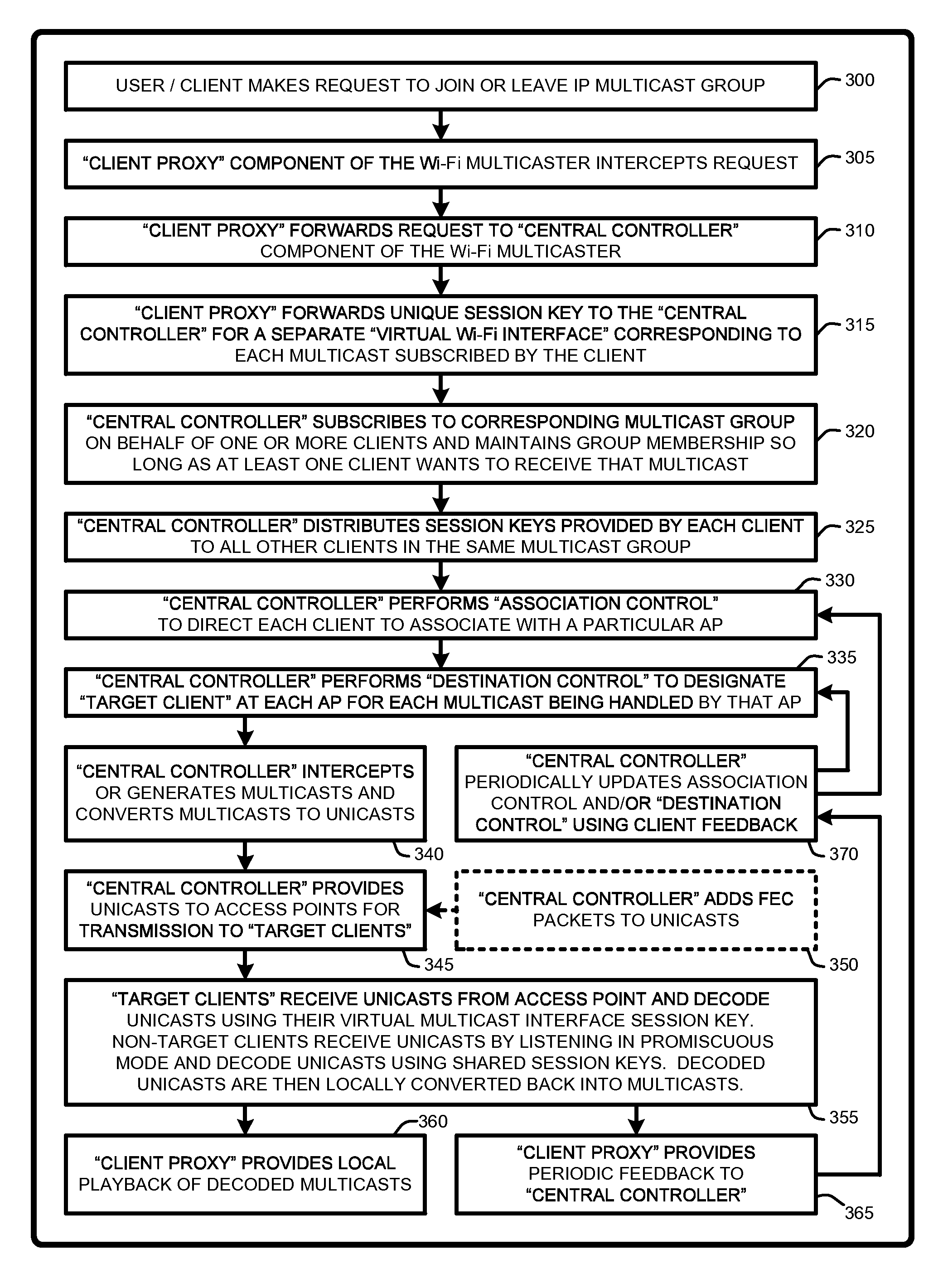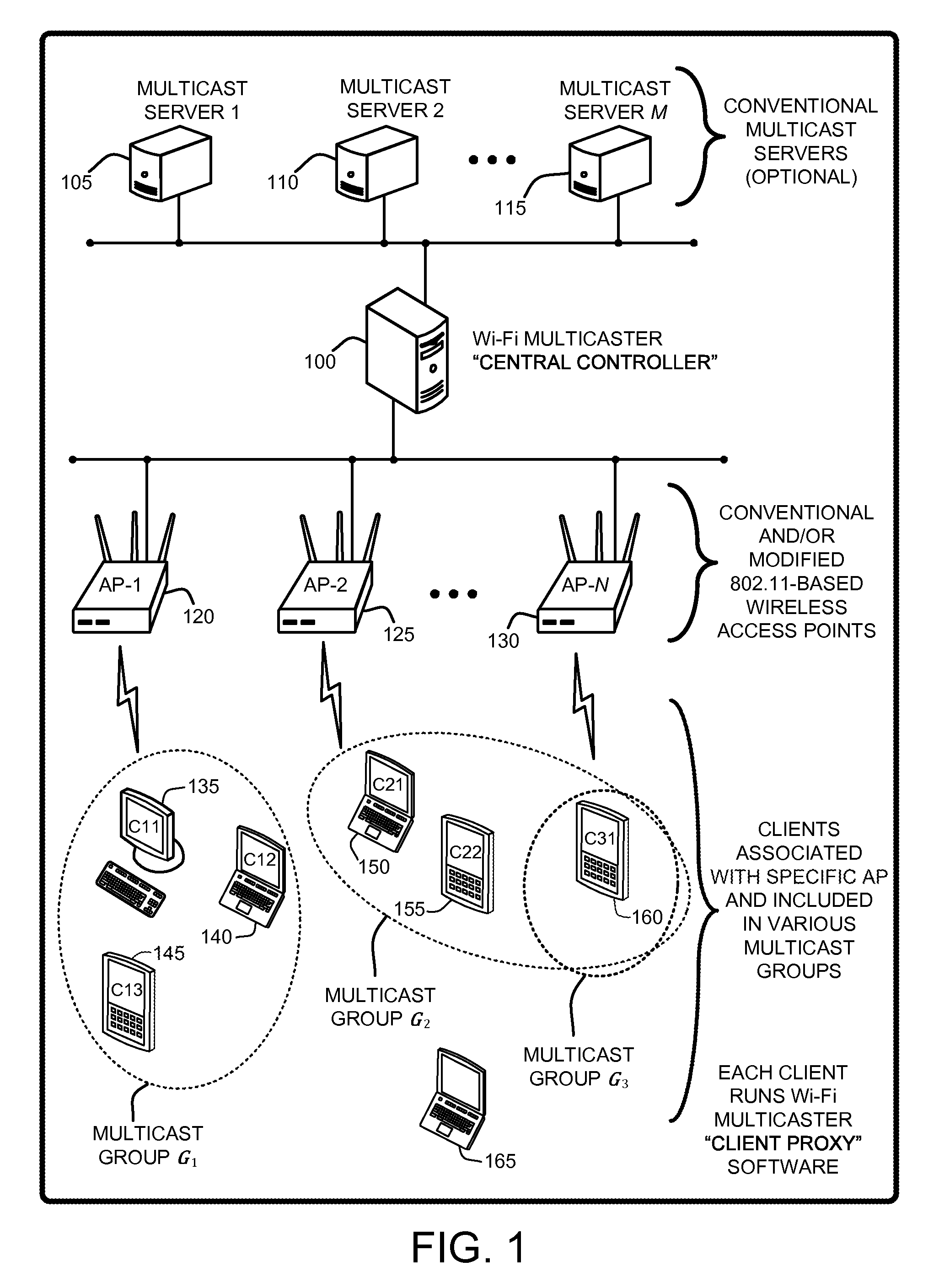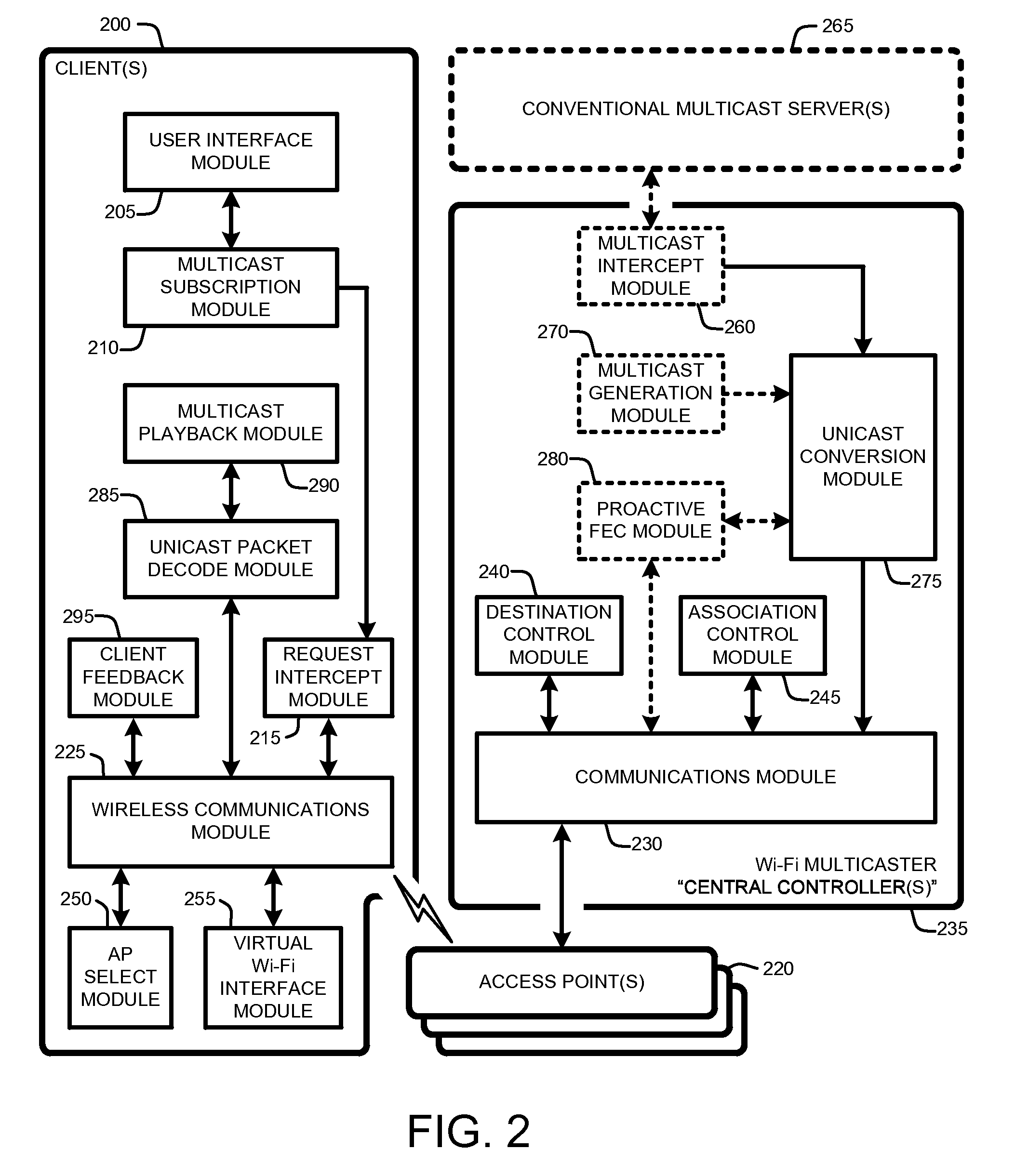Efficient and reliable multicast over a Wi-Fi network
a wi-fi network and multicast technology, applied in the field of wi-fi multicast, can solve the problems of limiting the rate at which multicast data can be sent, unfairness to other unicast clients that implement backoff protocols, and high loss rates for receivers, so as to reduce the loss of all multicast clients, reduce airtime, and reduce overhead
- Summary
- Abstract
- Description
- Claims
- Application Information
AI Technical Summary
Benefits of technology
Problems solved by technology
Method used
Image
Examples
Embodiment Construction
[0030]In the following description of the embodiments of the claimed subject matter, reference is made to the accompanying drawings, which form a part hereof, and in which is shown by way of illustration specific embodiments in which the claimed subject matter may be practiced. It should be understood that other embodiments may be utilized and structural changes may be made without departing from the scope of the presently claimed subject matter.
[0031]1.0 Introduction:
[0032]A “Wi-Fi Multicaster”, as described herein, provides a practical and efficient Wi-Fi multicast system for environments having potentially large numbers of Wi-Fi clients. “Clients”, as discussed herein, includes any mobile device having wireless 802.11-based networking capabilities. Such mobile devices include, but are not limited to, notebooks, netbooks, PDA's, desktop computers, smart phones, media players, etc. It should also be understood that while the following discussion focuses on 802.11-based Wi-Fi networ...
PUM
 Login to View More
Login to View More Abstract
Description
Claims
Application Information
 Login to View More
Login to View More - R&D
- Intellectual Property
- Life Sciences
- Materials
- Tech Scout
- Unparalleled Data Quality
- Higher Quality Content
- 60% Fewer Hallucinations
Browse by: Latest US Patents, China's latest patents, Technical Efficacy Thesaurus, Application Domain, Technology Topic, Popular Technical Reports.
© 2025 PatSnap. All rights reserved.Legal|Privacy policy|Modern Slavery Act Transparency Statement|Sitemap|About US| Contact US: help@patsnap.com



